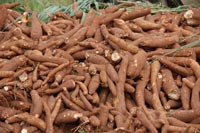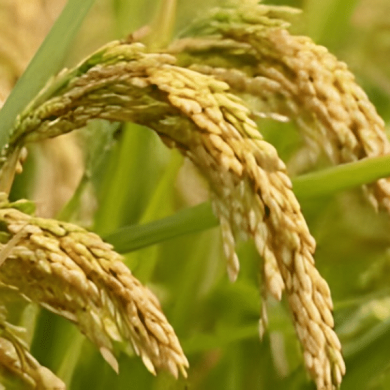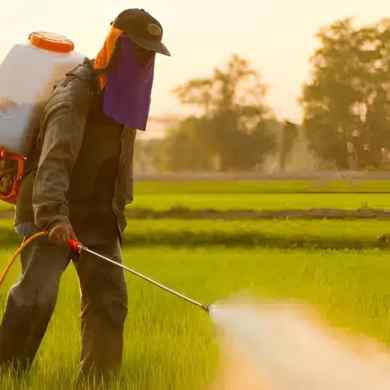No products in the cart.
Return To ShopEconomic Importance of Cassava Production in Nigeria
Economic Importance of Cassava Production in Nigeria
It is rich in carbohydrates, calcium, vitamins B and C, and essential minerals. However, nutrient composition differs according to variety and age of the harvested crop, and soil conditions, climate, and other environmental factors during cultivation.
Importance
In sub-Saharan Africa (SSA) cassava is mainly a subsistence crop grown for food by small-scale farmers who sell the surplus. It grows well in poor soils with limited labor requirements. It provides food security during conflicts when the invader cannot easily destroy or remove the crop, since it conveniently grows underground. Cassava is usually intercropped with vegetables, plantation crops (such as coconut, oil palm, and coffee), yam, sweet potato, melon, maize, rice, groundnut, or other legumes. The application of fertilizer remains limited among small-scale farmers due to the high cost and lack of availability. Roots can be harvested between 6 months and 3 years after planting.
Apart from food, cassava is very versatile and its derivatives and starch are applicable in many types of products such as foods, confectionery, sweeteners, glues, plywood, textiles, paper, biodegradable products, monosodium glutamate, and drugs. Cassava chips and pellets are used in animal feed and alcohol production. Medium to large private farms in the major producing countries like Nigeria and Mozambique support some of these industrial uses of the crop.
Cassava Production
More than 291 million tons of cassava were produced worldwide in 2017, of which Africa accounted for over 60%. In 2017, Nigeria produced 59 million tons making it the world’s largest producer (approximately 20% of global production) with a 37% increase in the last decade. Nigeria exports about 3.2 million tons annually and earned a record $136 million in 2013.
Cassava production depends on a supply of quality stem cuttings. The multiplication rate of planting materials is very low compared to grain crops, which are propagated by true seeds. In addition, cassava stem cuttings are bulky and highly perishable as they dry up within a few days.
Harvesting
Over 26 million hectares of cassava were planted worldwide in 2017, with about 76% in Africa. Cassava requires less labor than other staple crops (21% less in working days as compared to maize, yam and rice). However, it requires considerable postharvest labor because the roots are highly perishable and must be processed into a storable form soon after harvest. Roots can be harvested between six months and three years after planting.
Many varieties contain a substance called cyanogenic glucosides that can generate cyanide in the storage roots, which is toxic, if inadequately processed. Various processing methods, such as grating, sun drying, and fermenting, are used to reduce the potential to produce cyanide.
Consumption
It is estimated that 37% of dietary energy comes from cassava. The Democratic Republic of Congo is the largest consumer of cassava in SSA, followed by Nigeria.
Disease and constraints
The major pests of cassava in SSA are the cassava-whitefly (Bemisia tabaci), cassava green mite, the variegated grasshopper, and cassava mealybug. The main diseases affecting cassava are cassava brown streak disease (CBSD), cassava mosaic disease (CMD), cassava bacterial blight, cassava anthracnose disease, and root rot. CMD alone accounted for an estimated 47% of East and Central Africa’s cassava production losses during a serious outbreak beginning in the early 1990s until 2006.
CBSD has become the biggest constraint for cassava production in eastern Africa, causing annual losses in excess of USD 736 million to smallholder farmers. CBSD causes rotting of affected roots making them unfit for human consumption or industrial use. Since 2004 the disease CBSD has spread to more than 10 eastern and Central African countries, affecting food and income security. Pests, diseases, and poor cultivation practices combined can cause yield losses as high as 50% in all of Africa.
IITA’s research and impact
IITA scientists have played a leading role in developing improved cassava varieties that are disease- and pest-resistant, low in potential to generate cyanide, drought-resistant, early maturing, and high yielding. Disease-resistant varieties give sustainable yields of about 50% more than local varieties. Distribution of CMD-resistant varieties in response to the CMD outbreak in East and Central Africa resulted in production levels recovering to pre-epidemic levels in less than five years. Improved cassava varieties are now used in most cassava-growing countries in SSA.
IITA’s biological control program resulted in a 95% reduction in cassava mealybug damage and a 50% reduction in damage caused by the cassava green mite.
Postharvest strategies include the development of effective and simple machines and tools that reduce processing time and labor, and production losses. With these machines, losses can be reduced by 50% and labor by 75%. About 20% of the cassava harvest are peels can be processed into livestock free ingredients.
During the past three decades, IITA has trained more than 9000 researchers and technicians in ten African countries in processing and uses for high-quality cassava flour (HQCF). As a result, the private sector in Madagascar, Nigeria, Tanzania, and Uganda have begun using HQCF as a raw material for processing secondary products such as biscuits and noodles.
Currently IITA is adapting the so-called stage gate approach within cassava breeding to make breeding more socially inclusive and demand led to further increase the impact of breeding work. An interdisciplinary team of social scientists that includes gender specialists and marketing experts, are informing breeding work on the cassava characteristics and traits that are in demand by the different users of cassava roots within the value chain: farmers, processors, marketers, and consumers of cassava products. The link between cassava food product quality and cassava varieties is a major focus.
Related posts
Learn innovative strategies for Maximizing Yields: Innovative Strategies for Rice Cultivation in this informative article. Discover new techniques and technologies... Continue reading
Fisheries Equipment in Nigeria Key Factors to Consider Before Making a Purchase, it’s important to understand the key factors that... Continue reading
As cities around the world continue to grow in population, technology is being used to make them more sustainable and... Continue reading
Optimizing Your Soil with Balanced NPK Fertilizers in your garden or farmland can be a tricky process, especially with the... Continue reading
Can Herbicide Kill Humans? We Have the Answers. We all asked that can herbicides Kill Humans? We Have the Answers.... Continue reading








Add comment
You must be logged in to post a comment.